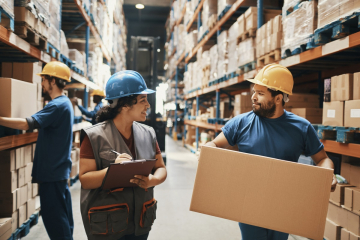The past year has been full of change. But threaded underneath the tumult of the pandemic, we’re seeing another kind of transformation in how companies must evolve supply chain management.
It used to be that accountability ended at the limits of a company’s own perimeter. But now, businesses are feeling the pressure when it comes to being accountable for the totality of their supply chain. Leading companies have long understood the broad risks and opportunities embedded within the supply chain (e.g. environment management, social and ethical practices, business continuity, cost). The pressure and expectations have been ratcheted up considerably in recent years from multiple key stakeholder perspectives.
Investor Pressure
Technology has revolutionized the world and has made everything transparent. Investors are using advanced data analytics, AI-assisted software, and cloud business intelligence tools to gain a sophisticated view of supply chains. This comes as no surprise when you consider that supply chain compliance is one of the biggest emerging concerns for investors. All of this newly unearthed data means a clearer view of a supply chain risk profile - and the truth isn’t always pretty. With this increased visibility comes increased expectation for risk mitigation. This trend is being further fueled by the emergence of disclosure and regulatory frameworks that are increasingly being adopted by investors including the Task Force on Climate-related Financial Disclosures (TCFD) and extended producer responsibility (EPR).
Customer Pressure
For every consumer products company, the success of their business is largely driven by satisfying the evolving demands of their largest customers. In addition to standard expectations on quality and price, customers are deploying an increased focus on business continuity, product traceability, and transparency on product footprints. All three of these items are strongly related to supply chain sustainability strategies and actions.
Consumer Pressure
Every product has a backstory, or at least that is the growing expectation of many consumers, especially younger generations. Increasingly, consumers are inquisitive about the products they are choosing to buy. More and more people are taking a deeper look at what they apply or put in their bodies for foods, beverages, cosmetics, etc. They want to understand the story behind the product - where it comes from, how it was sourced, made, and packaged. They want to know if there are any harmful substances within the product, pound for pound impacts compared to alternatives, and so on. Many consumers also want to be intrigued and engaged where products have a history or societal connection.
The above perspectives are from over a decade of experience working with a broad range of clients on business optimization and resiliency. Based on this experience, here is some practical advice for consumer products companies:
-
Be Genuine: Before aggressively driving initiatives into your supply chain, make sure your own house is in order and that you are “talking the talk” and “walking the walk.” Nothing derails a sustainable supply chain strategy like the following question from a supplier, “So, you want us to reduce our energy and water usage but you don’t even have goals for your own operations?”
-
Think Holistically: Often time very solid risk assessments are completed, but they are done so in isolation or myopically with a focus on only isolated risks (e.g. water supply). While such assessments can be insightful, they also miss opportunities to truly understand aggregate conditions and scenarios (e.g. exposure to multiple or compounding risks). TCFD provides a very deployable framework for evaluating key physical (acute and chronic) and transition risks.
-
Consider Connections: Gaining insight that one of your facilities has a higher risk exposure than another is useful, but what if you also were able to see that that higher risk facility is supplied by two of three supplier facilities also facing risks? The odds of business continuity challenges or increases costs has increased by magnitudes due to aggregate risk conditions. Furthermore, what if one of the facilities was also sole source?
-
Exercise Prudence: While it is important to have confidence in your risk and opportunity assessment results, it is also critical to not overdue the analysis and short-change resources available for actions that make your company more resilient. Conduct a high-level screening and then dive deeper where warranted to validate risk and clarify investment opportunities. Also, make sure to leverage a combination of external datasets, internal facility and leadership insights, and expert interpretation.
-
Share Knowledge: Mostly likely a supplier facility and your own facilities have a tremendous amount in common in terms of best practices and opportunities to optimize energy, carbon, water, wastewater, and waste. Approach your supply chain as if they are your own facilities. By optimizing, you reduce costs, prepare facilities for the future (e.g. low carbon economies), and enhance your business continuity and resiliency. Collaborating with suppliers can also build longer-term business partnerships and retention.
Want more news and insights like this?
Sign up for our monthly e-newsletter, The New Leaf. Our goal is to keep you updated, educated, and even a bit entertained as it relates to all things EHS and sustainability.
Get e-NewsletterHave any questions?
Contact us to discuss your environment, health, safety, and sustainability needs today.






